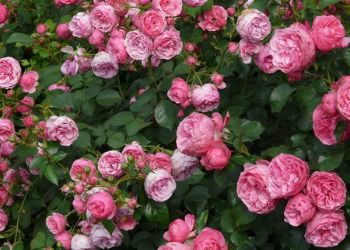When it comes to roses, there are many different types to choose from? One type of rose that you may not be familiar with is the floribunda rose. So what are floribunda roses?
In this article, we will take a closer look at floribunda roses and what sets them apart from other types of roses.
Floribundas are typically smaller than hybrid tea roses, with a more spreading growth habit and large clusters. They have multiple stems that branch off from the main stem, and each stem bears several blooms.
This floribunda roses data page is designed to offer some important basic information, features, and benefits to answer the question – what are floribunda roses. Mainly for those looking to grow floribunda roses and want to know more about them.

Floribunda rose overview
The floribunda rose is a type of rose that is part of the Rosa genus. These flowers are known for their large, showy blooms that appear in clusters.
Floribunda roses are categorized as ‘Modern Garden Roses.’
They are hybrid plants, meaning they are created by crossing two different types of roses, namely the polyantha and hybrid tea roses.
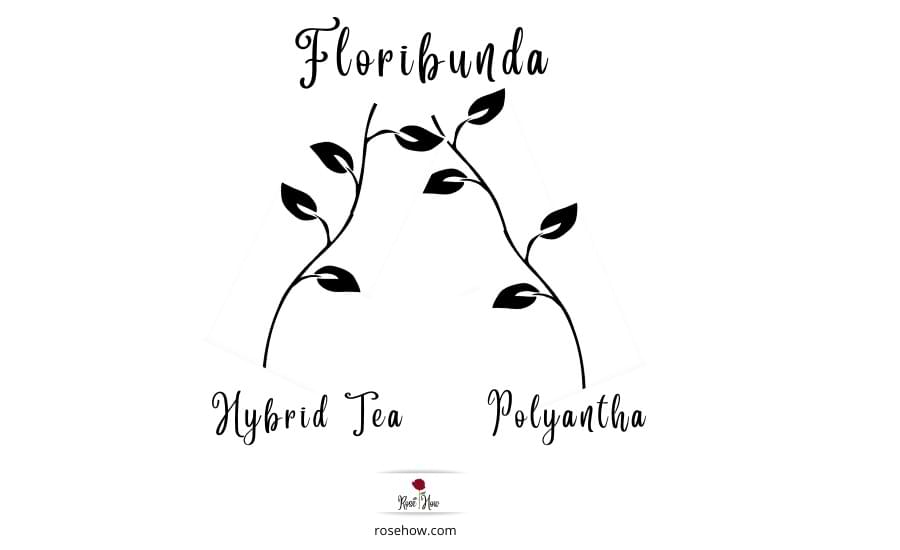
Here’s a quick roundup table about Floribunda roses, but for a more expansive explanation and helpful hints and tips, read the full sections below the table.
Floribunda roses information
| Genus | Rosa |
| Color Range | Mostly pink, blue, white, and red |
| Height Range | Up to 6 feet wide, up to 8 feet tall |
| Zones | Generally 4-11 |
| Climate | Thrive in warm climates, Avoid shade |
| Light Requirements | 6 hours of sunshine per day. Partial shade |
| Water Needs | Water regularly, deep watering once a week |
| Fertilizer Needs | All-purpose fertilizer applied once per month |
| Pruning Needs | Winter or early Spring, before new growth |
| Blooming Period | Spring and Summer, plus sporadic blooms |
Genus: Rosa
The name floribunda is derived from the Latin word “Floris” meaning flower. The first floribunda rose was bred in Germany in 1881.
Color range
The flowers themselves can be any color, although the most popular shades are blue, white, pink, and red.
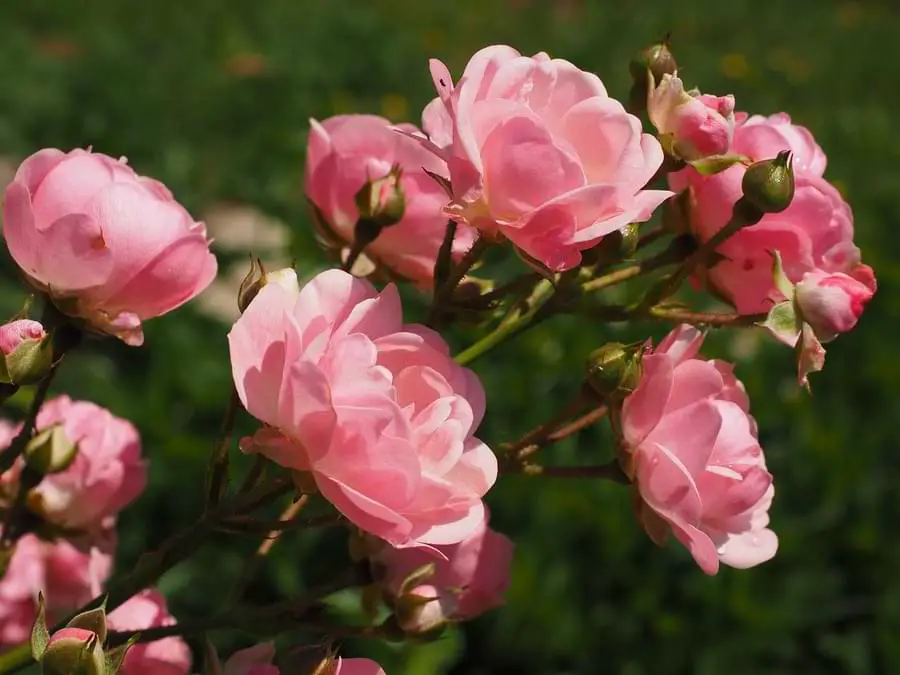
Height range
The plants themselves are typically medium to tall, with a spreading growth habit. They can spread up to 6 feet wide and can grow up to 8 feet tall.
Zones
Floribundas are suitable for planting in USDA hardiness zones 4-11.
Climate
Floribundas thrive in warm climates with plenty of sunshine. They can tolerate some shade, but too much shade will result in fewer flowers.
Light requirements
In terms of light and sun, floribundas are not too fussy and will do well in both full sun and partial shade. But ideally, they prefer 6 hours of sunshine, and be sure not to shade them too much.
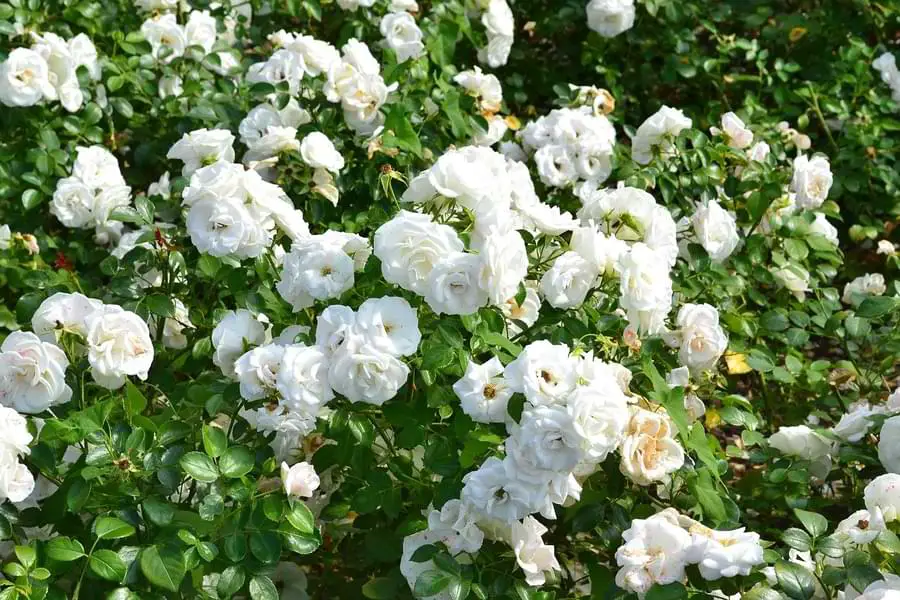
Water needs
As with most roses, floribundas will need to be watered regularly, especially during hot weather or periods of drought. They should be given a deep watering about once a week. See my complete article on when to water roses.
Fertilizing needs
For fertilizing, they will need a good all-purpose rose fertilizer applied about once a month during the growing season.
Pruning needs
Pruning is important for floribundas, as it will help to promote new growth and encourage more flowers. They should be pruned in early spring – before new growth begins.
Some floribunda varieties can be a bit sprawling, so you may want to pinch back new growth during the growing season to encourage a fuller plant.
Or use some methods to train the plant into the shape you want.
Here’s the floribunda rose information card…
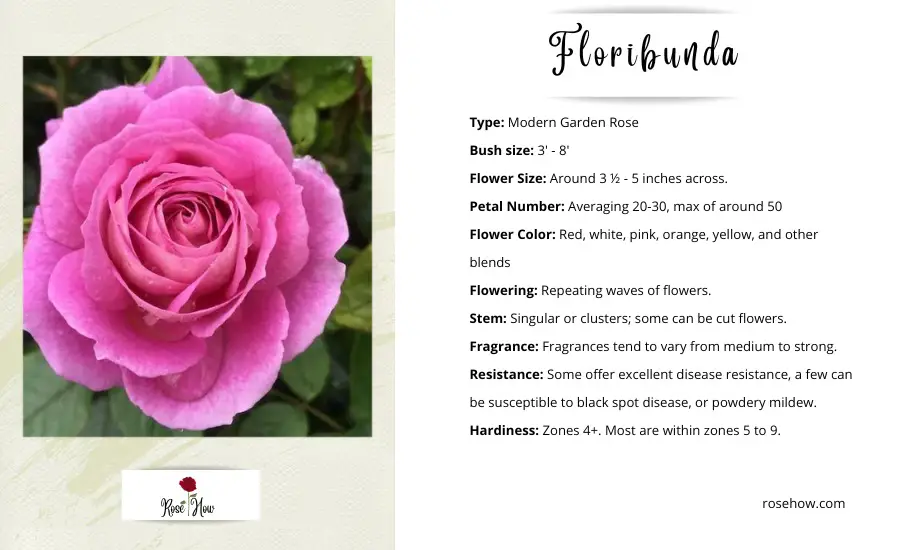
Floribunda: Ideal uses
Floribundas are ideal for use in beds and borders, as well as in mass plantings. They can also be used in containers or as hedges, or in mixed rose beds.
These flowers are typically easy to care for and are reasonably hardy for temperate climates. As this makes them a popular choice for gardens and landscaping.
They’re also a good choice for cutting gardens as they provide an abundance of blooms.
If you’re looking for a plant that will attract bees and other pollinators, then the floribunda rose is a good choice.
Floribunda’s make excellent hedges and fillers in empty spaces in the garden.
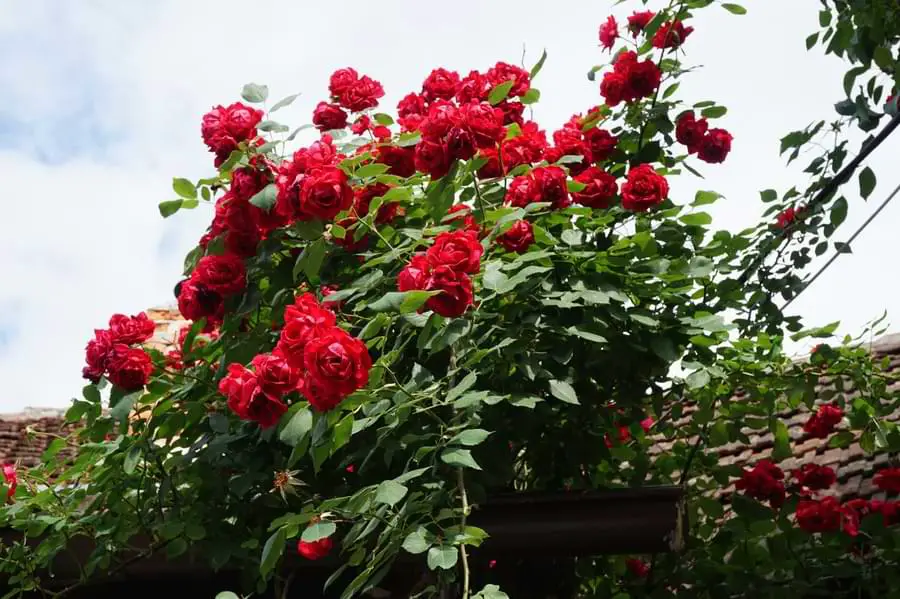
Floribunda: Season features
Floribundas generally bloom in the spring and summer, with sporadic blooms throughout the fall.
Some floribunda varieties have repeat bloom cycles, meaning they will produce flowers sporadically throughout the growing season.
Floribunda: Pests and problems
Floribundas are susceptible to the same pests and diseases as other roses, such as black spot, powdery mildew, Japanese beetles, and aphids. They can also be susceptible to rose rosette disease.
However, floribundas can shake off disease more easily compared to other types of roses. Check out some other types like those below. Or see the main rose categories.
Floribunda: Maintenance
Floribundas are relatively low-maintenance roses, very resistant and hardy.
I think they’re pretty good as a starter rose as the combination of hardiness, lower maintenance, and full and regular blooms will encourage more enthusiasm for roses.
They should be fertilized regularly and deadheaded (removing spent flowers) to encourage new growth and blooms.
Pruning should be done in late winter or early spring before new growth begins.
So if you’re looking for a rose that will provide color potentially all season long with relatively low maintenance, then choose a floribunda.
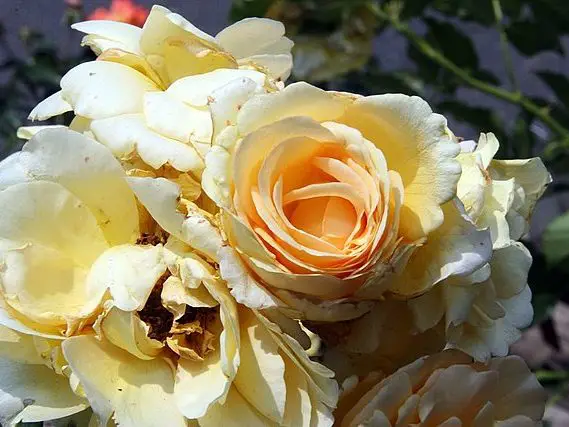
What are Floribunda Roses ~ More roses help 🌹
I hope this has provided you with some helpful information about Floribunda roses. There are other rose families and varieties that you might want to explore. See my other articles below…

Hi, I’m Michael. My passion for roses was sparked a few years ago after visiting a dedicated community rose garden. So Rosehow.com represents my take, my learnings, and my help for anyone looking to grow, be proud of, and harvest roses.

